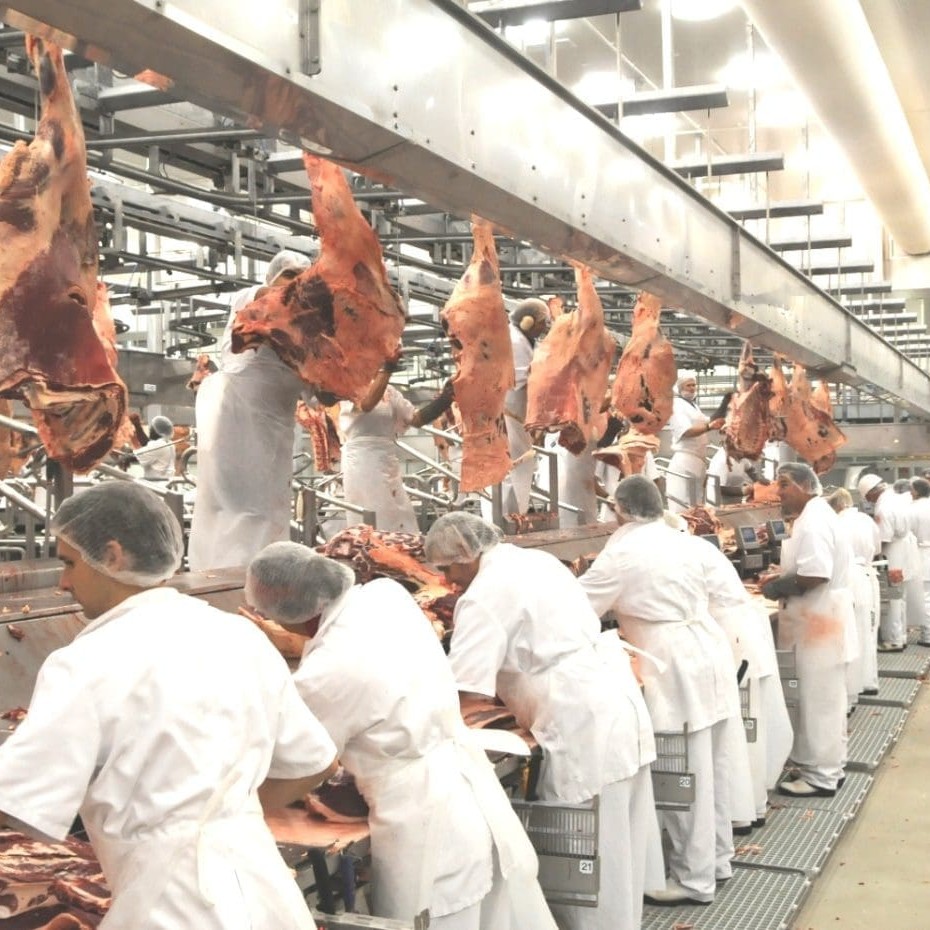 There are some distinct signs of a slow-down in beef kills on the horizon, despite another huge Eastern States seven-day tally last week.
There are some distinct signs of a slow-down in beef kills on the horizon, despite another huge Eastern States seven-day tally last week.
The National Livestock Reporting Service logged an Eastern States beef kill for the week ended Friday of 154,127 head, a big 13pc rise on the previous seven days, which was curtailed by the Queen’s Birthday holiday.
Queensland’s kill last week reached 81,868 head, up 15pc from a week earlier, and 27pc higher than this time last year. NSW was +8pc at 36,300; Victoria +17pc to 23,100; South Australia +10pc to 8170 and Tasmania +20pc to 4662 head.
The result means that the Eastern States region has seen well over 1.5 million head killed over the past ten weeks – an astonishing figure, given a total for the same ten weeks last year almost 250,000 head behind that.
There’s a growing view amongst processors that rates of slaughter may decline a little in coming weeks, however, particularly in moving away from more costly overtime and weekend work, which has partly driven the recent record rates of kill.
The reasoning behind that is open to interpretation, but it could be driven either by current flat demand in international markets (see Beef Central’s story last week , “Flatness seen in international markets”), the start of a slow-down in cattle supply, or both.
Large wholesaler contacts confirmed yesterday that there is a large and growing quantity of beef now in cold storage. As explained last week, some export customers are presently reluctant to buy Australian beef too far forward, mindful that given the recent slide in the A$, beef bought today could start to look expensive by next week.
That’s put pressure on export processors. The marketing departments are talking to the livestock and production staff, and the recent pattern of ‘kill, and kill at all costs’ is starting to put a strain on the supply chain, particularly when some meat is now very cheap.
“We’re sinking with meat: It’s now a case of the more you kill, the lesser money you will take,” one contact told Beef Central yesterday.
“In the next week or two, the kills that would normally ramp-up a little in July could well start to curtail a little bit, to try to move back from that tipping-point,” our contact said.
One large southeast Queensland export shed, that has been killing two Saturdays on/one off, will abandon weekend kills shortly. Another large plant has similar plans, and if that pattern becomes more widespread, Queensland kills could again settle back into the 75s or less, rather than the 81s and 82s that have become commonplace this year.
Supply-side showing easing trend
On the other side of the coin, supply is showing some distinct signs of easing. One large multi-site processor said their roster, instead of being 9-10 weeks out at some plants, was now back to 2-3 weeks in places.
“We’re still comfortable, supply wise, three weeks out, but there are slots starting to appear after that,” this processor said.
One company took an unusual step a month ago, going back to vendors of all the cattle it had ‘booked’ forward for a kill slot (no price attached), and advised them that the slots would only be honoured with an agreed price, rather than being ‘open-ended.’
About half of the cattle booked at the time were locked in at the prices offered by the company, while the other half have now been scratched. Some may well have been booked twice, with other processors, making the crowded kill rosters heading into August/September look worse than what they really were.
Other processors are also reporting lighter bookings and shorter waiting times than what was seen earlier. One big operator said they still had only very limited space for cattle ‘off the shelf’ during July, but ‘unpriced slots’ were starting to ease in August. Transport operators are also commenting on the slowing trend in cattle movements.
One large multi-site processor has lifted Southeast and Central Queensland direct-consignment rates 5c/kg across the board on grassfed cattle this week, while other are yet to follow-suit.
There may be a number of contributing factors behind that upwards adjustment:
- The impact of recent rain across a fair expanse of eastern Australia
- The start of the currency effect
- A desire to simply ‘keep some momentum going’ in supply, with a few more producers now taking a ‘wait and see’ approach, and the urgency seen in earlier turnoff now less obvious.
Best Southeast Queensland public grid prices seen this week include 0-2 tooth heavy steers 315c/kg; four-tooth Jap ox 305c; best cow 265c. MSA and EU grassfed remain unchanged, both on 340c.
Kills in southern Australia are still holding up surprisingly strongly, given the time of year. Many plants are still booked solid three weeks out, and the flow of grainfed cattle now closing-out – placed on feed earlier in the year when it looked like southern numbers would be tight by now, will only congest the marketplace further.
There’s a general feeling that numbers in the south will now start to shorten-stride fairly quickly now, however – despite big yardings at Wagga and other centres recently.
- The Eastern Young Cattle Indicator closed yesterday at 319.25c/kg liveweight, up 2c on the day before and 10.5c this time last week.



HAVE YOUR SAY